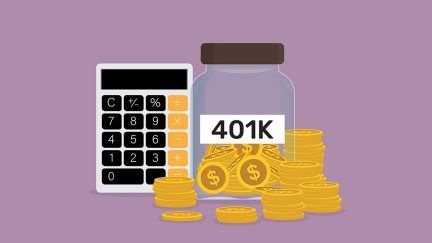Never miss a story — sign up for PLANADVISER newsletters to keep up on the latest retirement plan adviser news.
Low Birth Rates Are Not the Main Threat to Social Security Insolvency
Income inequality is a greater threat, according to the Social Security Administration’s chief actuary.

Stephen Goss, the chief actuary of the Social Security Administration, argued that economic setbacks and income inequality were the primary drivers of Social Security’s cash flow deficit.
In remarks made at the 2023 Harkin Retirement Security Symposium, hosted by the Harkin Institute, Goss said Social Security is currently projected to become insolvent by 2034. At that time, benefits will be cut to about 80% “of what is necessary to continue paying full benefits.”
If left unaddressed, this cliff could dramatically compromise the financial well-being of many retirees and the retirement planning for workers, according to Goss.
The prevailing narrative on Social Security’s precarity is that it is due to declining birth rates, Goss noted. He then explained that 1980s Social Security reforms, which raised the retirement age, reduced benefits for certain workers receiving public sector pensions and made Social Security earnings taxable, actually anticipated declining birth rates. Costs in the main Social Security Old-Age and Survivors Insurance Trust Fund have exceeded the program’s income including interest since 2021, and about “80% of the shortfall comes from unanticipated economic setbacks,” Goss explained, not from declining birth rates.
These setbacks are the combination of the Great Recession and what he called “dispersion of earnings,” or the concentration of total U.S. wage growth among those earning more than the cap on Social Security taxable income, set at $160,200 for 2023.
Goss explained that “average earnings increased more than expected, but real growth was 62% for the top 6% of workers, while only 17% for the lower 94% of workers” since the 1983 amendments to Social Security were made. This “reduced the share of earnings subject to [the Social Security] payroll tax.”
Max Richtman, president and CEO of the National Committee to Preserve Social Security and Medicare, shared this sentiment later at the conference. Richtman recommended that Congress explore taxing investment income at the same level as wages and/or lifting the cap on wages subject to payroll tax, both of which were also suggested by Goss.
The Social Security Expansion Act, sponsored by Senators Bernie Sanders, I-Vermont, and Elizabeth Warren, D-Massachusetts, in February, would create a 12.4% investment income tax on individuals making more than $200,000 to help fund Social Security. It would gradually lift the cap on wages subject to payroll tax until the cap would be fully removed in 2035.
The bill is the only Social Security reform bill proposed this Congress that would keep Social Security solvent for 75 years, according to Goss’s office. Since the bill raises revenue, it must begin in the House of Representatives. It was referred to the House Committee on Ways and Means on February 14 and has not advanced since.
You Might Also Like:

Senate Committee Debates Social Security Funding Proposal

Do Retirement Portfolios Need ‘Protected’ Income?
